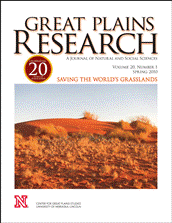Center for Great Plains Studies

Great Plains Research: A Journal of Natural and Social Sciences (through 2013)
Date of this Version
Fall 2004
Document Type
Article
Abstract
The city of Calgary is well known for its entrepreneurial spirit, often associated with the Calgary Stampede and Alberta's wildcatting oil and gas industry. For those interested in the early history of the city and the Bow Valley, Henry Klassen's Eye on the Future is both readable and enlightening. Concentrating on the years 1870 through 1900, Klassen captures Calgary's frontier blend of rural and emerging urban life well before the era of oil and gas.
Calgary's dynamic growth during this period was due to its geography. At the confluence of the Bow and Elbow Rivers, the Edmonton Trail from the north converged with the Macleod Trail running south, and in tum the Whoop-Up Trail from Montana, bringing traders and ranchers from the Great Plains in the I 870s. Intersecting the system of north-south trails and wagon roads, the east-west Canadian Pacific Railway arrived in 1883, and the town of Calgary was incorporated in 1884. The CPR brought homesteaders, merchants, and entrepreneurs, linking Calgary by rail and steamships to Canada, the United Kingdom, and Hong Kong.


Comments
Published in Great Plains Research Vol. 14, No. 2, 2004. Copyright © 2004 The Center for Great Plains Studies, University of Nebraska–Lincoln. Used by permission.